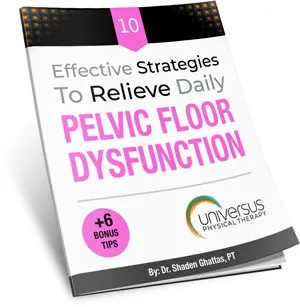Pregnancy and childbirth can mean many changes, and aches and pains, for a woman’s body, including in the pelvic area. Pelvic pain may be felt in the lower back, buttock, groin, hip or leg, and can limit your ability to walk, sleep, and perform various physical activities.
What causes pregnancy-related pelvic pain?
A woman’s body is challenged during and after pregnancy. Fluctuating hormone levels can cause excessive joint mobility and muscle imbalances, causing pain and dysfunction. These changes can cause weakness in the muscles related to bowel and bladder function, tender points in the muscles of the low back, buttock, abdomen, and pelvic floor, pressure on one or more nerves in the pelvis, and weakness of the core muscles.
Pelvic pain can also be related to the presence of scar tissue after abdominal or pelvic surgery such as a c-section, or in the vaginal area after an episiotomy or a tear during childbirth.
What are the symptoms of pelvic pain?
In addition to pain in the lower abdomen and pelvis, symptoms may include:
- pain in the hip, buttock, or leg
- pain in the tailbone
- limited sitting tolerance
- pain in the joints of the pelvis, specifically the pubic symphysis (connection of the pubic bones in the front of the body) or the sacroiliac joint (where the pelvis connects to the lower spine)
- pain with intercourse
- tender points in the muscles of the abdomen
- reduced range of motion in the hips and lumbar spine
- urinary or fecal frequency, urgency, or incontinence (leakage)
- painful bowel movements, constipation and/or straining with bowel movements
- Pelvic organ prolapse (a shift in the position of the pelvic organs). This may result in a sensation of pelvic heaviness, due to the pelvic organs bulging at the opening of the vagina.
How can a physical therapist help?
As an expert in restoring and improving motion in people’s lives, a physical therapist can identify the causes of pelvic pain; joint dysfunction, muscle tightness, weakness, or imbalance, and nerve entrapment. A plan of care will be developed and may include targeted exercises, biofeedback, soft tissue or scar mobilization, retraining of uncoordinated muscles, postural training, and strengthening of core muscles to address
the pelvic pain.
Acknowledgment:
All contents © 2011, 2009 American Physical Therapy Association.
All rights reserved.



